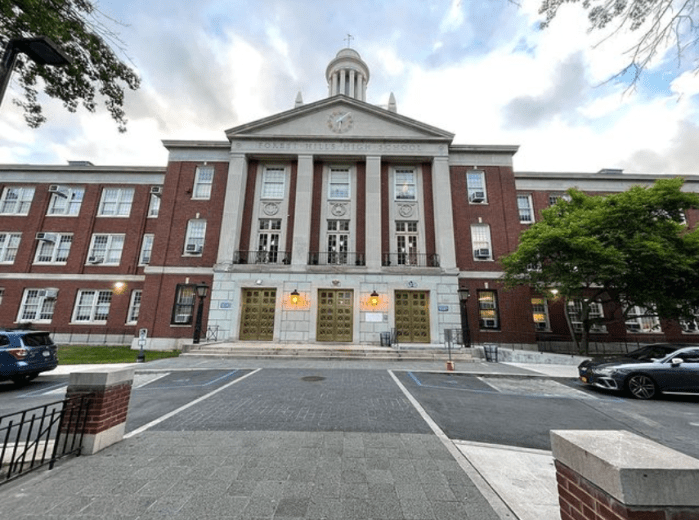Rene Alkalay, owner of Genesis Tree of Life, a yoga and wellness center on Metropolitan Avenue in Forest Hills, is furious that area flooding has cost him nearly $75,000.
“I want to know what you’re going to do to put me back in business,” he said at a town hall meeting on Thursday, September 27.
After being awash in complaints from Forest Hills residents regarding sewage flooding into their homes following heavy rains, Councilmember Karen Koslowitz and Community Board 6 invited the community to air their grievances directly to city officials in the hopes that a solution could be found.
A line of more than 30 people formed in the packed assembly room of the Forest Hills Jewish Center, where residents, some more vocal than others, expressed their concerns to employees of the Department of Environmental Protection (DEP).
What ensued was a two-hour forum of tales of fecal-matter-filled water spouting out of drains, gallons upon gallons of sewer water flooding into basements, toxic mold growing on walls, skin inflammations, and cars, furniture and other belongings damaged beyond repair.
Ron Green, who lives on Yellowstone Boulevard, described a tactic he used during one storm that involved clogging his toilet with a towel and placing two sandbags on top of the lid before sitting on them. In the end, not even that could prevent a shower of feces from spraying out of the toilet, he said.
“It was like a fire hose,” he said.
Clay artist Ginnie Shaknis has seen her apartment flood three times due to heavy rainfall this summer. With the help of a friend, they bailed over 200 gallons of water out of her home. Lately she’s been dipping into her supply of clay to use as a way to clog her drains.
When asked how much financial damage she has suffered, Shaknis said, “I can’t even say anymore. It just keeps happening and happening.”
Edward Coleman, assistant commissioner for the Bureau of Water and Sewer Operations at the DEP, essentially told attendees that there is nothing the agency can do. Because the sewers are designed to handle one-and-a-half inches of rain per hour, the city is only liable for damage done to peoples’ homes when rainfall exceeds that amount. Since none of the storms this summer surpassed that quantity, it is unlikely that residents will receive any compensation.
Attendees who brought up their issues were asked to provide information to the DEP regarding the locations of suspected faulty storm drains. Several residents also cited occasions in which they contacted the DEP with concerns of overflowing storm drains and detached manhole covers and received a response they found unsatisfactory — or no response at all. The DEP took down information from these residents and said they would look into these matters.
Koslowitz asked the DEP employees what she could do to help her constituents affected by the flooding.
“As a single councilmember, there’s nothing you can do,” said Mark Lanaghan, assistant commissioner of Intergovernmental Affairs. “The purpose of meetings like this is to learn about things we didn’t know about and to have issues brought to our attention.”
Sandra Crystal has been living in Forest Hills for the last 50 years. Her apartment building flooded on two occasions this summer.
“Who’s your boss?” Crystal asked the panel when it was her turn at the microphone. “If it’s the mayor, then that’s who we need to talk to. If the mayor lived in Forest Hills, something would be done about it.”
Koslowitz said she found the meeting to ultimately be “very frustrating.”
“We received no answers. We have to look into different ways than before. Since 2007, this situation has been prevalent. It’s unacceptable that nothing can be done. I’m going to see what I can do, alert the mayor’s office and look for answers.”



































